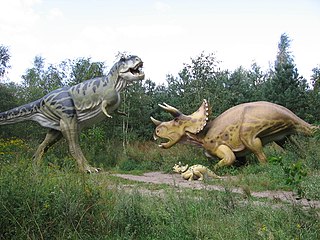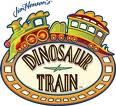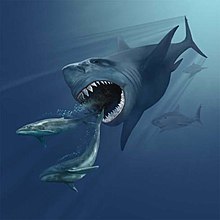
Tyrannosaurus is a genus of large theropod dinosaur. The type species Tyrannosaurus rex, often shortened to T. rex or colloquially T-Rex, is one of the best represented theropods. It lived throughout what is now western North America, on what was then an island continent known as Laramidia. Tyrannosaurus had a much wider range than other tyrannosaurids. Fossils are found in a variety of rock formations dating to the latest Campanian-Maastrichtian ages of the late Cretaceous period, 73.2 to 66 million years ago. It was the last known member of the tyrannosaurids and among the last non-avian dinosaurs to exist before the Cretaceous–Paleogene extinction event.

Skull Island is the name most often used to describe a fictional island that first appeared in the 1933 film King Kong and later appearing in its sequels, the three remakes, and any other King Kong-based media. It is the home of the eponymous King Kong and several other species of creatures, mostly prehistoric and in some cases species that should have been extinct long before the rise of mammalian creatures, along with a primitive society of humans.

Extreme Dinosaurs is an American animated series produced by DIC Productions, L.P. and Bohbot Entertainment in 1997 based on a 1996 toy line from Mattel. This show is a spin-off of Street Sharks.

Anonymous Rex is a 2004 science fiction film directed by Julian Jarrold and starring Sam Trammell and Daniel Baldwin. The film was produced as a "backdoor pilot" for an unproduced television series of the same name. It is based on the novel Casual Rex by Eric Garcia. It was aired on Sci Fi Channel.
Creation is an unfinished feature film, and a project of stop motion animator Willis O'Brien. It was about modern men encountering dinosaurs and other prehistoric animals on an island. The picture was scrapped by RKO studio head David O. Selznick on the grounds of expense, and Merian C. Cooper, the studio producer who recommended the film's cancellation, considered the storyline to be boring, due to lack of action. The completed footage ran 20 minutes in length, although approximately five minutes is all that survives today. The surviving footage shows a stop motion dinosaur watching a live action boy hunting a live action animal. Cooper later used some of the miniatures and dinosaur armatures and O'Brien's stop-motion animation techniques for King Kong.

Tyrannosaurus rex is unique among dinosaurs in its place in modern culture; paleontologist Robert Bakker has called it "the most popular dinosaur among people of all ages, all cultures, and all nationalities". Paleontologists Mark Norell and Lowell Dingus have likewise called it "the most famous dinosaur of all times." Paleoartist Gregory S. Paul has called it "the theropod. [...] This is the public's favorite dinosaur [...] Even the formations it is found in have fantastic names like Hell Creek and Lance." Other paleontologists agree with that and note that whenever a museum erects a new skeleton or bring in an animatronic model, visitor numbers go up. "Jurassic Park and King Kong would not have been the same without it." In the public mind, T. rex sets the standard of what a dinosaur should be. Science writer Riley Black similarly states, "In all of prehistory, there is no animal that commands our attention quite like Tyrannosaurus rex, the king of the tyrant lizards. Since the time this dinosaur was officially named in 1905, the enormous carnivore has stood as the ultimate dinosaur."
XTNCT is a comic strip set in the Far Future which involved genetically modified dinosaurs. It was created by Paul Cornell and D'Israeli and published in the Judge Dredd Megazine.

Cultural depictions of dinosaurs have been numerous since the word dinosaur was coined in 1842. The non-avian dinosaurs featured in books, films, television programs, artwork, and other media have been used for both education and entertainment. The depictions range from the realistic, as in the television documentaries from the 1990s into the first decades of the 21st century, to the fantastic, as in the monster movies of the 1950s and 1960s.

Rivers of Time is a 1993 collection of science fiction short stories by American writer L. Sprague de Camp, first published in paperback by Baen Books. All but one of the pieces were originally published between 1956 and 1993 in the magazines Galaxy, Expanse, The Magazine of Fantasy & Science Fiction, Analog, and Asimov's Science Fiction, and the Robert Silverberg-edited anthology The Ultimate Dinosaur. The remaining story was first published in the present work.
The Carnegie Collection was a series of authentic replicas based on dinosaurs and other extinct prehistoric creatures, using fossils featured at the Carnegie Museum of Natural History as references. They were produced by Florida-based company Safari Ltd., known for their hand-painted replicas, from 1988 to 2015, and became known as "the world’s premier line of scale model dinosaur figures."

Cadillacs and Dinosaurs is an animated television series produced by De Souza Productions, Galaxy Films and Nelvana, which aired on CBS as part of its Saturday morning children's lineup in the United States from 1993 to 1994, lasting for one season of 13 episodes. Based on Xenozoic Tales by Mark Schultz, the show was created by screenwriter Steven E. de Souza, who acquired the TV rights after producing the video game Cadillacs and Dinosaurs, which was also based on Schultz's comic. The show dealt with many strong ecological and political issues that were central to the plot development.

Stegosaurus is one of the most recognizable types among cultural depictions of dinosaurs. It has been depicted on film, in cartoons, comics, as children's toys, as sculpture, and even was declared the state dinosaur of Colorado in 1982. Stegosaurus is a subject for inclusion in dinosaur toy and scale model lines, such as the Carnegie Collection.

The Magic School Bus In the Time of the Dinosaurs is the sixth book in Joanna Cole and Bruce Degen's The Magic School Bus series.
Dinamation International Corporation was a robotics effects company based in San Juan Capistrano, Santa Ana, and Tustin, California, United States.

Dinotopia is a television miniseries produced by Hallmark Entertainment in association with RTL Television Germany. It is based on the Dinotopia book series by James Gurney, that depicts a fictional utopia in which sapient dinosaurs and humans coexist. The miniseries serves as a sequel to the Dinotopia books, Dinotopia (1992) and Dinotopia: The World Beneath (1995). The main characters of the story are two American teenage boys from contemporary times. The boys' father's plane crashes into the sea and they get stranded on Dinotopia, where they must adjust to a new society. The story in the film contains references to many of the characters in the book series, with some of their descendants occupying key roles in the plot. The original score was composed by Trevor Jones. This score is performed by the London Symphony Orchestra, conducted by Geoffrey Alexander.

Dinosaur Train is an animated television series aimed at preschoolers ages 3 to 6 and created by Craig Bartlett, who also created Nickelodeon's Hey Arnold!. The series features a Tyrannosaurus rex named Buddy who, together with the rest of his family, who are all Pteranodons, takes the Dinosaur Train to explore his time period, and have adventures with a variety of dinosaurs. It is co-produced by The Jim Henson Company in association with the Infocomm Media Development Authority, Sparky Animation, FableVision, Snee-Oosh, Inc., Reel FX, and Sea to Sky Entertainment. As of September 2018, PBS Kids had ordered 11 more episodes, taking the total number of episodes to 100. A film based on the series from Universal Pictures and Universal 1440 Entertainment titled, Dinosaur Train: Adventure Island premiered on April 12, 2021.

Dinotrux is an American animated television series based on Chris Gall's series of books by the same name. It features a fictional prehistoric world inhabited by hybrid characters that are part animal and part mechanical. The larger ones, known as Dinotrux, are dinosaurs combined with trucks. They are accompanied by Reptools, smaller creatures that are part reptile, part tool. The series debuted on August 14, 2015, on Netflix, with the second season following on March 11, 2016, the third on October 7, 2016, the fourth on March 31, 2017, and the fifth on August 18, 2017. Beginning on November 10, 2017, subsequent seasons were released under the title Dinotrux Supercharged, with the second season being released on March 23, 2018, and the third season on August 3, 2018. On August 2, 2024, Dinotrux: Supercharged left Netflix.

The feeding behaviour of Tyrannosaurus rex has been studied extensively. The well known attributes of T. rex are often interpreted to be indicative of either a predatory or scavenging lifestyle, and as such the biomechanics, feeding strategies and diet of Tyrannosaurus have been subject to much research and debate.

Dino Ranch is a Canadian animated children's television series created by Matthew Fernandes, co-founder and chief creative officer of Industrial Brothers. Dino Ranch follows the adventures of the Cassidy family as they tackle life on the ranch in a fantastical, prehistoric and Wild West-inspired setting where dinosaurs roam. The series debuted on CBC in Canada on January 16, 2021, and on Disney Junior in the United States on January 18, 2021, and later on Disney+ on June 18, 2021.
















